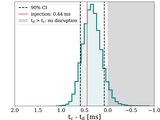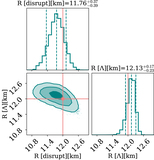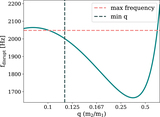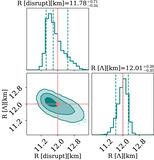Image Details
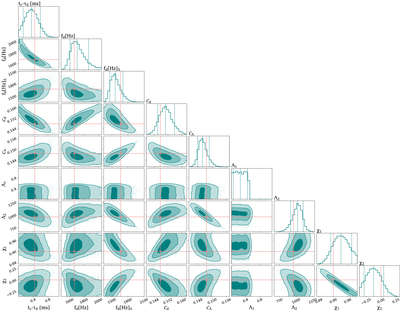
Caption: Figure 6.
Posterior distribution for key NSBH parameters measured by a network of Cosmic Explorer observatories. The different shades show 1σ, 2σ, and 3σ credible intervals. From left column to right column, the parameters are the neutron star disruption time relative to the BNS merger time in seconds t c − t d ; the disruption gravitational-wave frequency f d measured from the disruption time; the gravitational-wave frequency measured indirectly from the neutron star tidal deformability f d [Λ]; the neutron star compactness ﹩{{ \mathcal C }}_{{\rm{d}}}﹩ and ﹩{{ \mathcal C }}_{{\rm{\Lambda }}}﹩ measured from the disruption frequency and the tidal deformability, respectively; the black hole tidal parameter Λ1 = 0; the neutron star tidal parameter Λ2; the black hole spin magnitude χ 1, and the neutron star spin magnitude χ 2. The posterior distributions for the disruption frequency calculated two ways are comparable; however, the posterior distribution for the neutron star compactness calculated with the tidal deformability is more constraining than when calculated with the disruption information. This is likely because in the kHz regime, small changes in frequency correspond to larger changes in neutron star equation of state than comparable changes in tidal deformability.
Copyright and Terms & Conditions
© 2023. The Author(s). Published by the American Astronomical Society.



